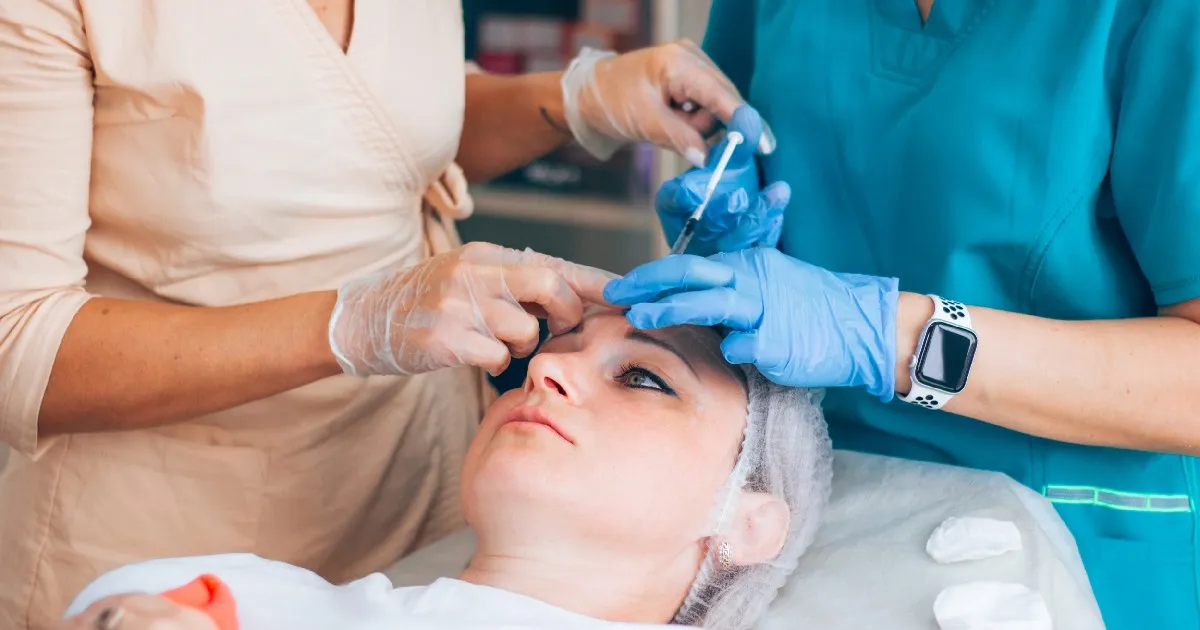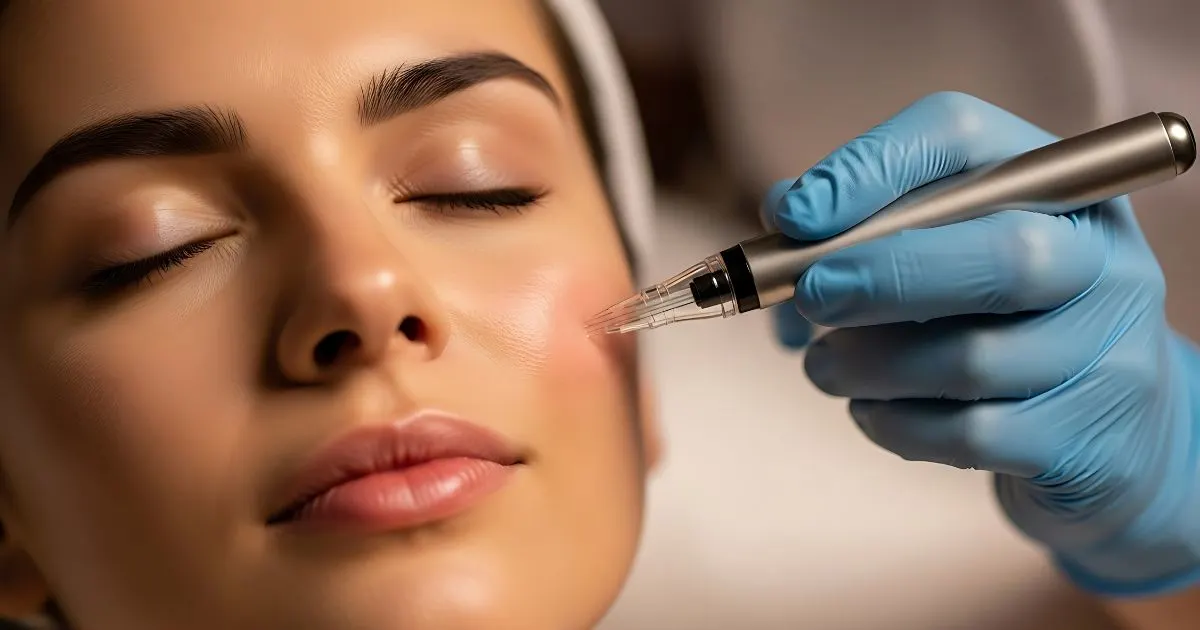Fillers made from hyaluronic acid (HA) have become increasingly popular for improving facial features and restoring volume. The results of these fillers are generally great, but there may be times when a patient would like to reverse them. Hylenex can help in this situation.
Hylenex is an injectable enzyme solution designed specifically to dissolve HA fillers. In the case of unwanted or misplaced fillers, it provides a safe and effective way to reverse the effects of the filler.
In this blog post, we will explore how Hylenex works, its potential side effects, and the overall process of using Hylenex to reverse fillers. If you’re considering a filler reversal, you’ll have a better idea of whether Hylenex is a good choice for you.
What Is Hylenex Filler Reversal?
Hylenex (hyaluronidase) is an enzyme that specifically targets and breaks down hyaluronic acid, the main component in HA fillers like Juvederm, Restylane, and others. When injected, Hylenex dissolves the filler by breaking the bonds that hold the hyaluronic acid molecules together. This allows the body to reabsorb the filler material more quickly, effectively reversing its effects.
One of the key advantages of Hylenex is its precision. It can target areas where the filler may have been overdone or misplaced. This makes it a preferred choice for both practitioners and patients looking to correct filler issues without damaging the surrounding tissue.
Why Would Someone Need Filler Reversal?
There are several reasons why someone might choose to undergo a filler reversal procedure using Hylenex:
- Overfilling or Unnatural Results: Sometimes, too much filler can lead to a “puffy” or unnatural look, prompting the need for a correction.
- Asymmetry: Filler may not always be evenly distributed, resulting in asymmetrical facial features.
- Lumps, Nodules, or Granulomas: In rare cases, fillers can form lumps or hard nodules, especially if there is an inflammatory reaction.
- Misplacement of Filler: Occasionally, filler may be injected into the wrong area or migrate over time, requiring correction.
- Change in Aesthetic Preference: Some patients change their minds and decide they no longer want the filler.
For these situations, Hylenex offers a reliable solution to achieve the desired aesthetic outcome or return the skin to its pretreatment state.
The Hylenex Filler Reversal Process
How Much Hylenex Is Needed?
The amount of Hylenex required depends on several factors, including:
- Type of Filler Used: Some HA fillers are more robust than others and may require more Hylenex to dissolve.
- Time Since Injection: Fillers that have been in place for longer may be more integrated into the tissue, requiring more Hylenex for complete dissolution.
- Amount of Filler to Be Reversed: Typically, one vial of Hylenex dissolves approximately 1 ml of filler, but this can vary.
- Presence of Granulomas or Nodules: If an inflammatory nodule or granuloma is present, additional Hylenex may be necessary.
- Urgency of Reversal: In cases of an urgent need, like a vascular occlusion, more Hylenex may be required to address the situation quickly.
The practitioner will assess these factors and determine the dosage needed to achieve the desired result.
The Injection Procedure
The Hylenex injection process is straightforward. First, the area is cleansed, and the practitioner carefully identifies the regions where the HA filler needs to be dissolved. Hylenex is then injected into those specific areas.
The enzyme begins to work almost immediately, with the effects typically noticeable within minutes to a few hours. Multiple sessions may be required depending on the extent of the correction needed. Patients usually experience minimal discomfort during the injection, and a numbing agent can be applied if necessary.
What to Expect After Hylenex Treatment
Following the Hylenex injection, the treated area may experience temporary swelling or redness. These side effects are usually mild and resolve on their own within a few days. The majority of patients see significant improvements in the appearance of their skin shortly after the procedure. If the goal is to replace the dissolved filler, new filler injections can typically be performed 3-7 days after the Hylenex treatment once the skin has settled.
Potential Side Effects of Hylenex Filler Reversal
Common Hylenex Side Effects
Although Hylenex is generally well tolerated, some side effects may be associated with this procedure. In terms of side effects, the following are the most common:
- The most commonly reported side effects are mild swelling and redness at the injection site. It typically resolves within a few hours to a few days following the onset of this reaction.
- Minor bruising may occur around the injection site in some patients. It is more likely to occur if multiple injections are necessary to achieve the desired result.
- You may experience temporary itching or tenderness in the treated area, but this usually subsides within a few days.
In general, these side effects are mild and temporary, which makes Hylenex a relatively low-risk procedure for reversing fillers.
Comparing Hylenex to Other Filler Reversal Agents
Hylenex is not the only option for HA filler reversal. Other hyaluronidase products are available, but Hylenex stands out for several reasons:
- Lower Risk of Allergic Reactions: Compared to other hyaluronidase products, Hylenex is less likely to cause allergic reactions, including anaphylaxis. This makes it a safer option for patients with a history of sensitivities.
- Effectiveness and Precision: Hylenex is known for its efficacy in dissolving HA fillers with precision, allowing for targeted correction without affecting surrounding tissues.
Overall, Hylenex is considered the gold standard for HA filler reversal due to its safety profile and effectiveness.
What Should You Discuss with Your Practitioner?
Before undergoing Hylenex filler reversal, it’s essential to have an open discussion with your practitioner about your goals and concerns. Some questions you may want to ask include:
- How much Hylenex will be used?
- What should I expect during and after the procedure?
- What are the chances of experiencing side effects?
- How long will it take for the filler to dissolve completely?
- Can new filler be injected afterward if desired?
An experienced provider like those at Eastside Aesthetics will take the time to explain the procedure and ensure that you feel comfortable with the treatment plan.
Is Hylenex Filler Reversal Right for You?
Deciding whether Hylenex filler reversal is the right option depends on several factors, including your specific aesthetic goals, the type of filler used, and any concerns about the current appearance. If you’re unhappy with your filler results or have experienced complications, Hylenex offers a safe and effective solution.
Consulting with a trusted provider who specializes in cosmetic injections will help you make an informed decision. They can assess your situation, recommend the appropriate course of action, and guide you through the process from start to finish. Schedule your consultation and take the first step toward feeling confident in your skin again!







